Automation proposal of a use and storage rainwater system at a country house in Valle del Cauca
Propuesta de automatización de un sistema de almacenamiento y uso de aguas lluvias en una vivienda rural del Valle del Cauca
Main Article Content
An automation proposal for using rainwater in a home crop is presented in response to the need to better manage the rainwater collection system installed in a house near El Queremal village, municipality of Dagua, Valle del Cauca. Methodologically began with a field visit to the house where the rainwater storage system is located, mounted, and operating, with some mishaps described by the user and addressed in the proposal as a result of this research. Founded on a process of observation and interview with the user, a control design based on combinational logic was proposed where the selection of the devices was based on a weighting method which generated results for the acquisition of the elements that will fit the requirements of the project. An Arduino development board was chosen as the main controller of the process. It was necessary to elaborate a flowchart for the programming, also a P&ID scheme for the control process was elaborated, supported by the ISA standards, describing the operation and the way in which the process is executed. Finally, it was verified through a simulation using Proteus software loading the algorithm created in Arduino IDE for automation, concluding that it technically works and responds according to the needs presented by the user. The main results obtained in the research exercise are shown where a basic proposal that points to the use of rainwater is made known.
Downloads
Article Details
Brundtland, G. H. (1987). Our Common Future. Oxford University Pres. pág. 291-294 DOI: https://doi.org/10.1017/S0376892900016805
Datos Abiertos. (2022). Precipitaciones. Ambiente y Desarrollo Sostenible. Tomado del sitio web: https://www.datos.gov.co/Ambiente-y-Desarrollo-Sostenible/Precipitaciones/ksew-j3zj
Evans, R. G., & Sadler, E. J. (2008). Methods and technologies to improve efficiency of water use. Water Resources Research. Vol. 44. Tomado del sitio web: https://agupubs.onlinelibrary.wiley.com/doi/full/10.1029/2007WR006200 DOI: https://doi.org/10.1029/2007WR006200
Gonzalez L., N., Carvajal E., Y., & Loaiza C., W. (2016). Análisis de Sequías meteorológicas para la cuenca del río Dagua, Valle del Cauca. Tecnura, 101-113.
Madias, K., & Szymkowiak, A. (2022). Residential Sustainable Water Usage and Water Management: Systematic Review and Future Research. MDPI. Vol. 14(7). Tomado del sitio web: https://www.mdpi.com/2073-4441/14/7/1027 DOI: https://doi.org/10.3390/w14071027
Ministerio de Tecnologíasde la Información y Comunicaciones. (11 de 07 de 2022). Datos abiertos. Obtenido de GOV.CO: https://www.datos.gov.co/Ambiente-y-Desarrollo-Sostenible/Precipitaciones/ksew-j3zj
Senevirathna, S., Ramzan, S., & Morgan, J. (2019). A sustainable and fully automated procesto treat stored rainwater to meet drinking water quality guidlines. Process Safety and Environmental Protection. Elseiver. Vol. 130. pág. 190-196 DOI: https://doi.org/10.1016/j.psep.2019.08.005
Shufian, A., Haider, M. R., & Hasibizzman, M. (2021). Results of a simulation to propose an automated irrigation & monitoring system un crop production using fast charging & solar charge controler. Cleaner Engineering and Tecnology. Vol. 4 . Tomado del sitio web: https://www.sciencedirect.com/science/article/pii/S2666790821001257 DOI: https://doi.org/10.1016/j.clet.2021.100165



 Perfil Google Scholar
Perfil Google Scholar







